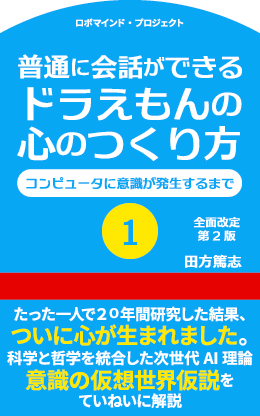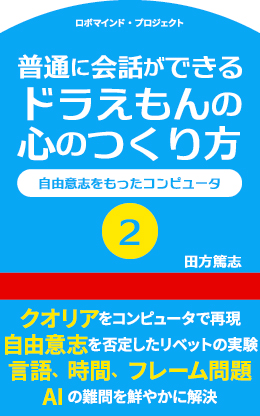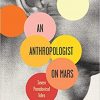
What Are Emotions – What is A Cognitive Pattern?
What Are Emotions – What is A Cognitive Pattern?
With cognitive patterns, you can summarize what people are trying to say in one word.
Human beings have various emotions – being happy, sad, grateful or hateful.
Not just emotions, we have sense of right and wrong.
Furthermore, we comprehend concepts such as God and Devil.
Everyone is capable of comprehending emotions, sense of right and wrong, and concepts such as God and Devil.
Despite the different names, there exist God and Devil in every culture in the world.
Come to think of it, it sounds a bit odd.
God and Devil transcendently exist in various cultures which are bound to never intertwine.
This in turn can be understood as such concepts are innate to human beings, not achieved by their individual effort.
In short, human mind inherently has a function to comprehend emotions、sense of right and wrong, and concepts such as God and Devil by nature.
Therefore, it can be said that the above-mentioned concepts make up the core functions of human mind.
Which means, if we can handle these concepts with computer, we will be able to invent a mind for robots.
But computer is just a machine that calculates.
All it can do is to add or subtract.
Then how are we going to make computer calculate emotions and concepts such as sense of right and wrong?
In this post, we are going to discuss about it.
To understand what the other person is feeling, you need to be able to extract their emotions.
In order to extract emotions, we apply patterns to each emotion in Robomind Project.
Not just simple emotions like being happy and sad, there are sense of right and wrong and ethics involved; we call this pattern cognitive pattern.
First, let me explain basic emotions.
Not limited to human beings, there is a shared desire “seeking pleasure and avoiding displeasure” among every species.
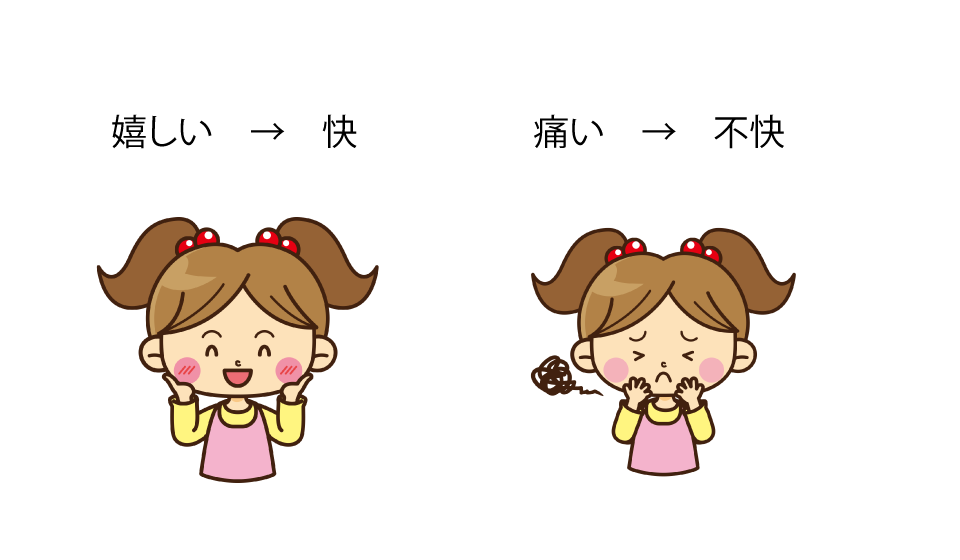
Seeking pleasure refers to actions necessary for survival such as need for food, sex and sleep.
Avoiding displeasure refers to actions necessary for one’s own protection such as escaping from predator or avoiding heat, cold and pain.
These basic needs, vary from one species to another, are commonly shared from bacteria to human beings.
In the case of human beings, pleasure includes money and fame.
Pleasure and displeasure can also be rephrased as advantageous and disadvantageous.
And if you gain pleasure, it evokes fun, happy emotions; if you don’t gain pleasure, it evokes sad emotions.
Next, let’s focus on the other person’s desires.
What happens when the other person gains pleasure and advantages, or gains displeasure and disadvantages.
In fact, the basic principles of human society such as sense of right and wrong, are determined on pleasure and displeasure of others.
For instance, it is “right” to do something from which others gain pleasure or advantage; and it is “wrong” to do something from which others gain displeasure or disadvantage.
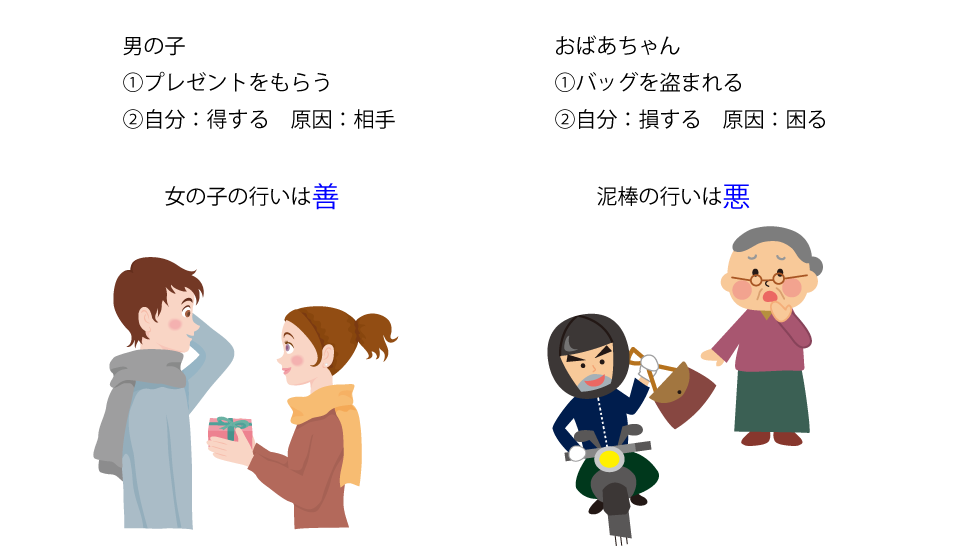
Let’s consider a situation where you are giving someone a present.
It is good to give someone a gift.
To apply it to the rule of sense of right and wrong above, as the other person benefits from being given a present, it is a good deed to give someone a present.
It is bad to steal something from someone else, right.
Here too, if we apply the rule of sense of right and wrong, as the other person loses from being stolen of something, it is a bad deed to steal from someone else.
By helping people in need, they gain pleasure: this too is a good deed.
In contrast, by doing something that troubles people, they gain displeasure: hence this is a bad deed.
The rule works even when the other person becomes people and the whole society.
It is bad to litter on the street because people will suffer from the dirty city.
It is good to clean up garbage on the street because people will be happy with the clean city.
Applying this theory to processing sentences by computer, it goes like this: from a sentence, computer calculates whether the subject benefits or loses from actions concerned, and the action which brings advantage is right; the one which brings disadvantage is wrong.
Societal and ethical problems, sense of right and wrong, can be solved by such easy calculation.
Let us now think of the embodiment of those abstract concepts of right and wrong into human figures with powerful might.
Yes, they are God and Devil.
Now computer can comprehend concepts such God and Devil.
This is how we emulate the basic functions of human mind in computer.
I also want to read

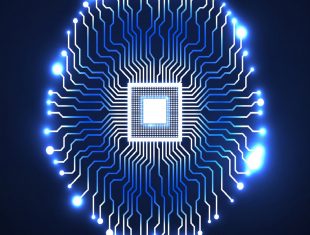 コンピュータで文の意味を理解しよう 「AI vs. 教科書が読めない子どもたち」批評4
コンピュータで文の意味を理解しよう 「AI vs. 教科書が読めない子どもたち」批評4 Important Factors Learnt from Helen Keller which Today’s Natural Language Processing Lacks of 4
Important Factors Learnt from Helen Keller which Today’s Natural Language Processing Lacks of 4 Necessary Functions for Brain-Inspired Computer:Part 3
Necessary Functions for Brain-Inspired Computer:Part 3 How Can AI (Artificial Intelligence) Become Human Race’s Best Friend?
How Can AI (Artificial Intelligence) Become Human Race’s Best Friend?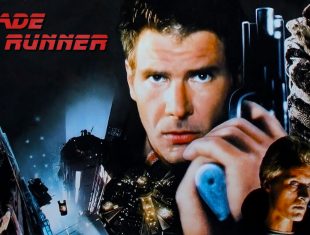 The Turing Test
The Turing Test